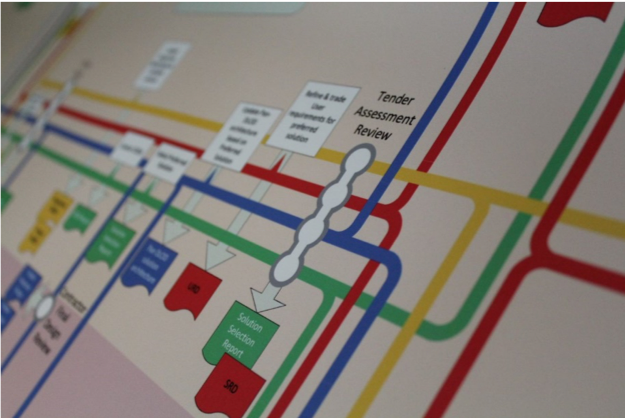The MOD tasked an industry consortium to provide an update to the Requirements, Test, Evaluation and Acceptance (RTEA) processes and guidance contained in the Acquisition Support Guidance (ASG).
The ASG (now known as Knowledge in Defence or KiD) had been a reference point for UK MOD acquisition principles, process and guidance for many years, originating as the Acquisition Operating Framework (AOF). However, over years there had been a number of changes to both the wider Defence Operating Model (DOM), and developments within industry best practice which necessitated an update to the existing material.
Phase 1 – overview
The primary objective of Phase 1 of the task was to improve critical areas of the Requirements & Acceptance section of the ASG, including:
- Checking the alignment of the RTEA section with the DOM and Acquisition Support Operating Model (ASOM).
- The incorporation of industry best practice.
- Providing updates to existing material where it was dated or incomplete.
- Broadening the scope to include Defence Infrastructure Organisation (DIO) and Information Support Services (ISS), and differences between the Front Line Commands (FLCs).
- Better support for Requirements Managers.
- Evolution of ‘Evaluation’(rather than Test and Acceptance) to give a full through-life perspective.
- Providing illustrative real-life examples for key RTEA products.
Phase 1 developed a Tube Map concept for visualising how to navigate through the Defence Acquisition Process.
To further develop the Requirements & Acceptance Guidance for people involved in the business of defence acquisition, the Phase 2 built from the work done previously on the KiD and tube map and identified prioritised areas for further development.

Developing an Agile approach
Working collaboratively with the wider industry team and the customer in Engineering group (DE&S), Optima Systems Consultancy jointly developed an agile approach to define sprints of activity, with regular reviews of an Agile Product Backlog (APB) to redirect tasking across the team and remain flexible to feedback and changing needs. This supported delivery from such a high tempo project with fortnightly reviews of the APB supporting agreed priorities for the next two-week sprint of activities and deliverables. R&A topic areas in the APB included, Test and Evaluation, P3M, the ‘integration’ and visualisation of various JSPs onto the tube map, requirements training and many more. A total of over 30 topic areas.
At short notice, to support the delivery of this RTEA update and APB, Optima successfully delivered a multi-disciplinary team of 15 consultants with the right skills and experience across a broad range of Requirements and Acceptance specialist topics. We used analysis techniques to identify and prioritise work required to improve the Tube Map content and design and combined systems engineering best practice and defence acquisition knowledge in order to create additional guidance for users across defence.
We created new techniques for storyboarding tube map design using Visio, and by example, assisted MOD scrutiny to develop new processes and visualisations to support the redevelopment of the Defence Investment Approvals process (JSP655).
Throughout the project, we participated in workshops, one-to-one meetings and reviews across a wide range of stakeholders, including: FINMILCAP, ARMY HQ; DE&S programme teams; dstl and industry. The knowledge generated from the industry team was shared at a presentation and workshop day that provided a forum to more widely share the new material with the MoD sponsor and stakeholder community.
In summary
During this high tempo project team, which was completed in just 2 months, Optima contributed to generating 130 of the 260 deliverables from the project, including guidance, templates and process improvements. The outputs will help improve the guidance available to people across the defence acquisition community.

